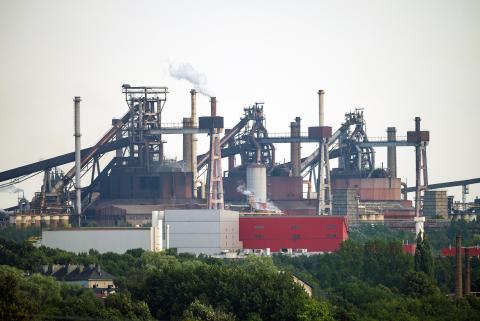Fuzzy Math in Australia
The Australian government’s Office of the Chief Economist (OCE) touts itself as a producer and repository of “objective, robust and high-quality economic analysis.”
Sometimes you have to wonder about that, as when the agency releases contradictory sets of numbers like those it published in the coal industry report in its September 2015 Resources and Energy Quarterly.
The report puts Australian thermal-coal exports at 201 million metric tons in calendar year 2014, and has them falling to 200 million metric tons in calendar year 2015 (a 0.5 percent decline). A few lines down, it compares a somewhat different time frame, using fiscal years, and puts Australian thermal-coal exports at 194.6 metric tons in fiscal 2013-2014 (July 2013-June 2014 ), rising by 5 percent to 204.5 million metric tons in fiscal 2014-2015 (July 2104- June 2015).
Fair enough. Australia’s coal exports, by these estimates, peaked in the 12 months to December 2014, and will come off fractionally in the 12 months to December 2015.
Look further, however, and the Office of the Chief Economist has the entire global traded thermal coal market dropping by 95 million metric tons, this calendar year, off 9 percent, to 1,030 million metric tons. Even though these numbers are double the rate of the global import decline forecast by OCE’s Bureau of Resources and Energy Economics (BREE) only three months ago, the agency remains staunchly bullish beyond 2015, insisting that import demand will rise gradually beginning in 2016.
Look deeper still and the agency says that among the major export countries, Indonesia’s coal exports will drop 4 percent (8 million metric tons) in 2015, Australia’s will decline 0.5 percent (1 million metric tons), Columbia’s will be up 1 percent (1 million metric tons), Russia’s will increase 3 percent (3 million tons), South Africa’s will increase 1 percent (1 million metric tons) and U.S. coal exports will be down by 20 percent (6 million metric tons). This adds up to a global decline in exports of 10 million metric tons. However, the report has global import demand dropping by 95 million metric tons. It’s an unexplained 85-million-tonne discrepancy—how is it the major exporters will see an only 10-million-tonne decline in calendar year 2015 when import demand will plummet by almost 10 times that amount?
BREE also sees thermal coal export prices remaining flat at about $60/tonne in real terms until 2020 (a forecast that is 30 percent above current forward-market expectations, which sit at US$51/tonne in nominal terms in 2020).
BREE does acknowledge that thermal coal imports into China have tanked in the first half of 2015, and reports that Chinese domestic coal production fell 6 percent year-on-year as well. Combining a 38 percent first-half fall in imports and a 6 percent decline in domestic production means coal available for Chinese consumption fell by 7-8 percent. But then comes another baffler, as BREE asserts that while thermal-fired power generation is flat in China, the country is building 123 gigawatts of new coal-fired power plants, and that therefore coal consumption has to rise. It’s not a very rational or reality-based argument. We think, by contrast, that a drop of that magnitude in coal consumption by the world’s biggest coal consumer does and will have a material effect on markets and will see early retirement of significant coal-fired power capacity. Logic would suggest a deferral of new builds is inevitable as well.
BREE acknowledges, too, that India’s domestic coal production is rapidly accelerating (contrary to what it acknowledges in its June feature report), hence it has lowered its import growth estimate for India this year from 20 million metric tons to just 2 million metric tons, but concludes that such a trend cannot be sustainable. What has to happen, BREE explains, is for Indian coal-import demand to rise by 6 percent annually from 2016 until 2020 (a combined growth over this period of 64 million metric tons per annum), thereby supporting the case for the development of foreign coal projects like the big one the Australian government has been supporting in the Galilee Basin of Northern Queensland now for several years.
It’s an outlook that seems naïve or perhaps just ill informed—but wrong by any stretch.
Tim Buckley is IEEFA’s director of energy finance studies, Australasia.











